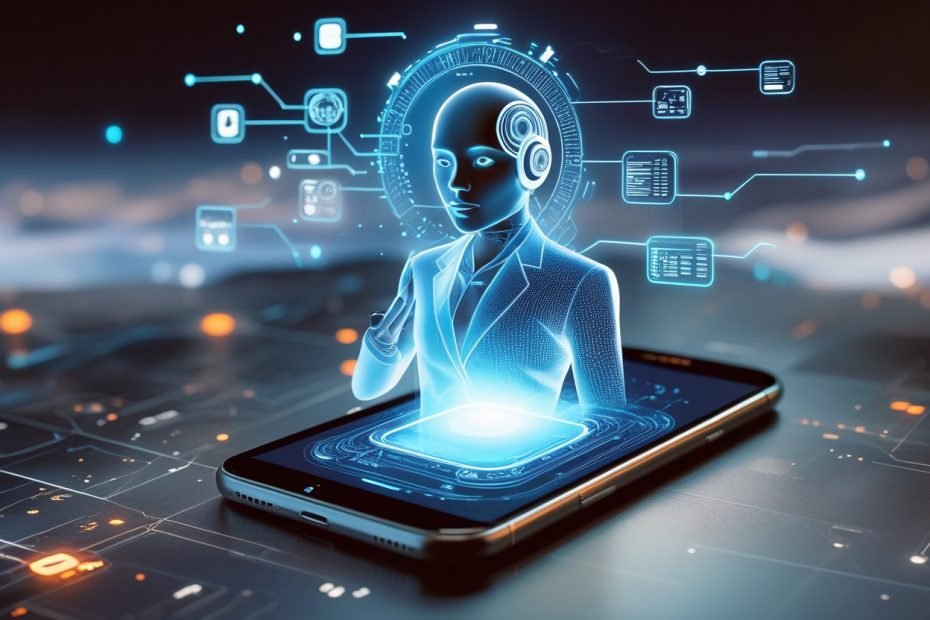Summary:
Discover the future of AI: Is on-device AI the key to privacy and speed, or does cloud AI offer unmatched intelligence? This article explores both approaches, their benefits, and challenges, and predicts the rise of hybrid AI. Stay ahead in AI trends and find the best model for your needs!
Introduction
Artificial Intelligence (AI) is evolving at an unprecedented pace, and with it, a major debate has emerged: should AI models be cloud-based or run directly on users’ devices? With the recent rise of PIN AI, which allows users to create personalized, private AI models on their smartphones, this debate has intensified. While on-device AI promises enhanced privacy and personalization, cloud AI offers unmatched computational power and data-driven intelligence. In this article, we explore both sides of the argument and what it means for the future of AI.
The Rise of On-Device AI: A New Era of Personalization
What is On-Device AI?
On-device AI refers to artificial intelligence models that run directly on users’ devices rather than relying on cloud servers. PIN AI, for example, allows individuals to build custom AI models powered by DeepSeek or Llama without the need for external cloud processing. This approach aligns with a growing demand for decentralized, privacy-focused AI solutions.
Benefits of On-Device AI
One of the primary advantages of on-device AI is the level of privacy and security it provides. Since data never leaves the device, users retain complete control over their information, significantly reducing the risk of breaches and unauthorized access. Another key benefit is reduced latency, as local processing eliminates the need for data transfer, ensuring that AI responses are delivered quickly and efficiently. Additionally, on-device AI offers offline accessibility, making it particularly useful in remote areas or for users with unreliable internet connections. This type of AI is also highly user-centric, as models learn directly from an individual’s data, creating a uniquely customized experience without the influence of aggregated external information.
Challenges of On-Device AI
Despite these benefits, on-device AI also presents certain challenges. One significant limitation is the reduced processing power available on smartphones and personal computers, which makes it difficult to achieve the same level of model complexity as cloud-based solutions. Another challenge relates to data silos and bias, as AI models trained on a single user’s data may lack the broader insights that cloud AI benefits from. Maintaining and updating on-device AI is also a concern, as users must manually update or fine-tune their models, unlike cloud solutions that receive automatic improvements.
The Power of Cloud AI: Intelligence at Scale
What is Cloud AI?
Cloud AI operates on centralized servers that process massive amounts of data from multiple sources. Platforms like OpenAI’s ChatGPT, Google’s Gemini, and Microsoft’s Copilot rely on cloud-based processing to deliver intelligent and adaptive responses.
Advantages of Cloud AI
Cloud AI stands out due to its superior computational power, benefiting from high-performance GPUs and TPUs that allow it to process vast amounts of data quickly. It also benefits from continuous learning and updates, ensuring users always have access to the latest advancements in AI without requiring manual intervention. Another key strength of cloud AI is collaborative intelligence, as it leverages global datasets to provide more accurate and well-rounded insights. Additionally, cloud-based AI is easier to use, as updates, security patches, and optimizations are managed by cloud providers rather than individual users.
Challenges of Cloud AI
However, cloud AI is not without its drawbacks. Privacy remains a major concern, as user data is often stored and processed on external servers, raising questions about security and potential unauthorized access. Latency issues are another challenge, as cloud AI requires internet connectivity, which can lead to response delays compared to on-device solutions. Furthermore, users must rely on third-party platforms to access AI, which may result in unexpected costs, service outages, or restrictions on usage.
The Future: A Hybrid AI Model?
Given the strengths and weaknesses of both approaches, the future of AI may not be a matter of choosing one over the other but rather integrating both. A hybrid AI model would allow for local AI processing of sensitive tasks, ensuring privacy while minimizing latency, while more complex computations could be handled in the cloud. This approach would provide seamless AI adaptability, enabling devices to intelligently switch between local and cloud processing depending on the complexity of the task and user preferences.
Tech giants like Apple and Google are already exploring hybrid AI, where on-device AI manages basic queries while cloud AI handles more resource-intensive tasks. This balanced approach is likely to become the standard in the coming years.
Conclusion: Which AI Model is Right for You?
The decision between on-device AI and cloud AI ultimately depends on individual needs. If privacy and speed are your top priorities, an on-device AI model like PIN AI may be the ideal choice. However, if you require advanced intelligence and ongoing updates, cloud-based AI remains a powerful solution.
For businesses and developers, the best approach may be to adopt a hybrid AI framework that maximizes both privacy and performance. As AI technology continues to evolve, the ability to seamlessly integrate on-device and cloud-based intelligence will likely shape the next era of personalized artificial intelligence.
What do you think? Would you prefer AI that runs entirely on your device, or do you trust cloud AI more?
